22 Fruits High in Potassium - A Ranking from Highest to Lowest
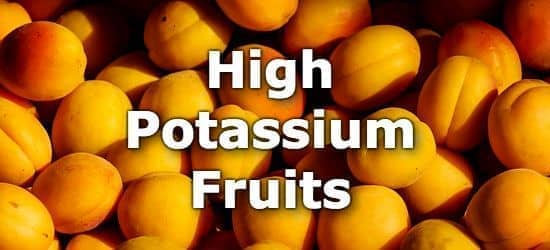
Potassium is an essential nutrient used to maintain fluid and electrolyte balance in the body. It plays a critical role in the transmission of electrical impulses in the heart, muscles, and nervous system. (1)
A deficiency in potassium causes fatigue, irritability, and hypertension (high blood pressure). (1)
Fruits high in potassium include avocados, guavas, kiwifruit, cantaloupe, bananas, pomegranate, apricots, cherries, and oranges. The current daily value (DV) for potassium is 4700mg. (2)
Below is a list of fruits high in potassium, for more, see the extended lists of potassium rich fruits, dried fruits high in potassium, and articles on high potassium foods and high potassium vegetables.
High Potassium Fruits List
-
1. Avocados + Add
Potassium
per AvocadoPotassium
per 100gPotassium
per 200 Calories975mg
(21% DV)485mg
(10% DV)606mg
(13% DV) -
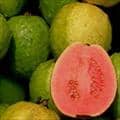 2. Guavas + Add
2. Guavas + Add
Potassium
per CupPotassium
per 100gPotassium
per 200 Calories688mg
(15% DV)417mg
(9% DV)1226mg
(26% DV) -
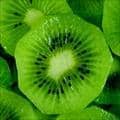 3. Kiwifruit + Add
3. Kiwifruit + Add
Potassium
per CupPotassium
per 100gPotassium
per 200 Calories562mg
(12% DV)312mg
(7% DV)1023mg
(22% DV) -
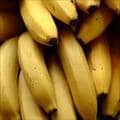 4. Bananas + Add
4. Bananas + Add
Potassium
per Cup SlicedPotassium
per 100gPotassium
per 200 Calories537mg
(11% DV)358mg
(8% DV)804mg
(17% DV) -
5. Cantaloupe + Add
Potassium
per CupPotassium
per 100gPotassium
per 200 Calories473mg
(10% DV)267mg
(6% DV)1571mg
(33% DV) -
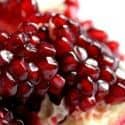 6. Pomegranate + Add
6. Pomegranate + Add
Potassium
per CupPotassium
per 100gPotassium
per 200 Calories411mg
(9% DV)236mg
(5% DV)569mg
(12% DV) -
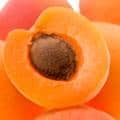 7. Apricots + Add
7. Apricots + Add
Potassium
per CupPotassium
per 100gPotassium
per 200 Calories401mg
(9% DV)259mg
(6% DV)1079mg
(23% DV) -
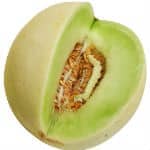 8. Honeydew Melon + Add
8. Honeydew Melon + Add
Potassium
per CupPotassium
per 100gPotassium
per 200 Calories388mg
(8% DV)228mg
(5% DV)1267mg
(27% DV) -
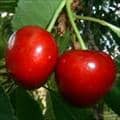 9. Cherries + Add
9. Cherries + Add
Potassium
per CupPotassium
per 100gPotassium
per 200 Calories342mg
(7% DV)222mg
(5% DV)705mg
(15% DV) -
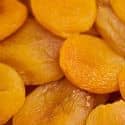 10. Dried Apricots + Add
10. Dried Apricots + Add
Potassium
per oz(Handful)Potassium
per 100gPotassium
per 200 Calories330mg
(7% DV)1162mg
(25% DV)964mg
(21% DV)More Dried Fruit High in Potassium
- 6% DV per oz of prunes
- 5% DV per oz of raisins
- 4% DV in 1 medjool date
See the section of dried fruits high in potassium by a 1 cup serving size.
-
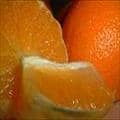 11. Oranges + Add
11. Oranges + Add
Potassium
per CupPotassium
per 100gPotassium
per 200 Calories326mg
(7% DV)181mg
(4% DV)770mg
(16% DV) -
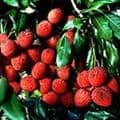 12. Litchis (Lychees) + Add
12. Litchis (Lychees) + Add
Potassium
per CupPotassium
per 100gPotassium
per 200 Calories325mg
(7% DV)171mg
(4% DV)518mg
(11% DV) -
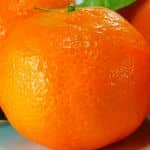 13. Tangerines + Add
13. Tangerines + Add
Potassium
per CupPotassium
per 100gPotassium
per 200 Calories324mg
(7% DV)166mg
(4% DV)626mg
(13% DV) -
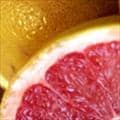 14. Grapefruit + Add
14. Grapefruit + Add
Potassium
per CupPotassium
per 100gPotassium
per 200 Calories320mg
(7% DV)139mg
(3% DV)869mg
(18% DV) -
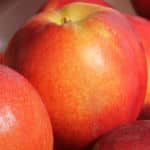 15. Nectarines + Add
15. Nectarines + Add
Potassium
per CupPotassium
per 100gPotassium
per 200 Calories287mg
(6% DV)201mg
(4% DV)914mg
(19% DV) -
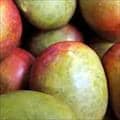 16. Mangos + Add
16. Mangos + Add
Potassium
per CupPotassium
per 100gPotassium
per 200 Calories277mg
(6% DV)168mg
(4% DV)560mg
(12% DV) -
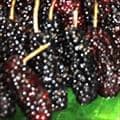 17. Mulberries + Add
17. Mulberries + Add
Potassium
per CupPotassium
per 100gPotassium
per 200 Calories272mg
(6% DV)194mg
(4% DV)902mg
(19% DV) -
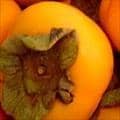 18. Persimmon + Add
18. Persimmon + Add
Potassium
per FruitPotassium
per 100gPotassium
per 200 Calories270mg
(6% DV)161mg
(3% DV)460mg
(10% DV) -
19. Papaya + Add
Potassium
per CupPotassium
per 100gPotassium
per 200 Calories264mg
(6% DV)182mg
(4% DV)847mg
(18% DV) -
20. Plums + Add
Potassium
per CupPotassium
per 100gPotassium
per 200 Calories259mg
(6% DV)157mg
(3% DV)683mg
(15% DV) -
21. Strawberries + Add
Potassium
per CupPotassium
per 100gPotassium
per 200 Calories254mg
(5% DV)153mg
(3% DV)956mg
(20% DV) -
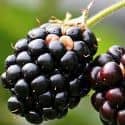 22. Blackberries + Add
22. Blackberries + Add
Potassium
per CupPotassium
per 100gPotassium
per 200 Calories233mg
(5% DV)162mg
(3% DV)753mg
(16% DV)
Less Common Potassium Rich Fruits
| Food | Serving | Potassium |
|---|---|---|
| 1. Passion Fruit (Granadilla) + | per cup | 17% DV (821mg) |
| 2. Mamey Sapote + | per cup | 17% DV (795mg) |
| 3. Jackfruit + | per cup | 16% DV (739mg) |
| 4. Soursop + | per cup pulp | 13% DV (626mg) |
| 5. Sapodilla (Chiku) + | per cup pulp | 10% DV (465mg) |
| 6. Cherimoya + | per cup (pieces) | 10% DV (459mg) |
| 7. Elderberries + | per cup | 9% DV (406mg) |
| 8. Loquats + | per cup | 8% DV (396mg) |
| 9. Black Currants + | per cup | 8% DV (361mg) |
| 10. Kiwano (Horned Melon) + | per cup | 6% DV (287mg) |
Dried Fruits High in Potassium
| Food | Serving | Potassium |
|---|---|---|
| 1. Dried Apricots + | per cup | 32% DV (1511mg) |
| 2. Dried Bananas + | per cup | 32% DV (1491mg) |
| 3. Prunes (Dried Plums) + | per cup | 30% DV (1397mg) |
| 4. Golden Raisins + | per cup | 26% DV (1231mg) |
| 5. Zante Currants + | per cup | 24% DV (1119mg) |
| 6. Dried Apples + | per cup | 8% DV (387mg) |
| 7. Medjool Dates + | per date | 4% DV (167mg) |
| 8. Deglet Noor Dates + | in 3 dates | 3% DV (138mg) |
How much potassium do you need each day?
The daily value (%DV) for Potassium is 4700mg which is a general target intended for most people. Adequate intakes (%AI) take age and gender into account and range from 2000mg - 3400mg for most people.
| Life Stage | AI | Infants |
|---|---|
| 0-6 months old | 400mg |
| 7-12 months old | 860mg |
| Children | |
| 1-3 years old | 2000mg |
| 4-8 years old | 2300mg |
| Males | |
| 9-13 years old | 2500mg |
| 14-18 years old | 3000mg |
| 19+ years old | 3400mg |
| Females | |
| 9-13 years old | 2300mg |
| 14-18 years old | 2300mg |
| 19+ years old | 2600mg |
| Pregnancy | |
| 14-18 years old | 2600mg |
| 19+ years old | 2900mg |
| Lactation | |
| 14-18 years old | 2500mg |
| 19-30 years old | 2800mg |
From the Nutrient Ranking Tool
Use the ranking tool links below to select foods and create your own food list to share or print.
- Foods High in Potassium
- Foods Low in Potassium
- Vegetables High in Potassium
- Fruits High in Potassium
- Vegetarian Foods High in Potassium
- Nuts High in Potassium
- Grains High in Potassium
- Beans High in Potassium
- Dairy High in Potassium
- Breakfast Cereals High in Potassium
- Fast Foods High in Potassium
View more nutrients with the nutrient ranking tool, or see ratios with the nutrient ratio tool.
Related
Data Sources and References
- Grimm PR, Coleman R, Delpire E, Welling PA. Potassium modulates electrolyte balance and blood pressure through effects on distal cell voltage and chloride J Am Soc Nephrol. 2017 Sep;28(9):2597-2606. doi: 10.1681/ASN.2016090948. Epub 2017 Apr 25. 28442491
- U.S.FDA - Daily Value on the New Nutrition and Supplement Facts Labels
Simplify Nutrition Tracking with MyFoodData!
Speedy Tools and Detailed Data FREEEasily analyze your meals to find the best foods for your goals.
✅ Use our recipe nutrition calculator and nutrition comparison tool.
✅ Access expert nutrition data tools and in-depth articles.
✅ Log foods and organize your recipes with a free account.


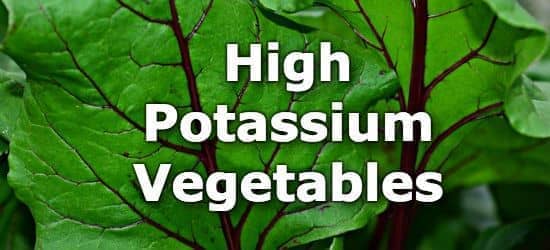 Next ➞
Next ➞
